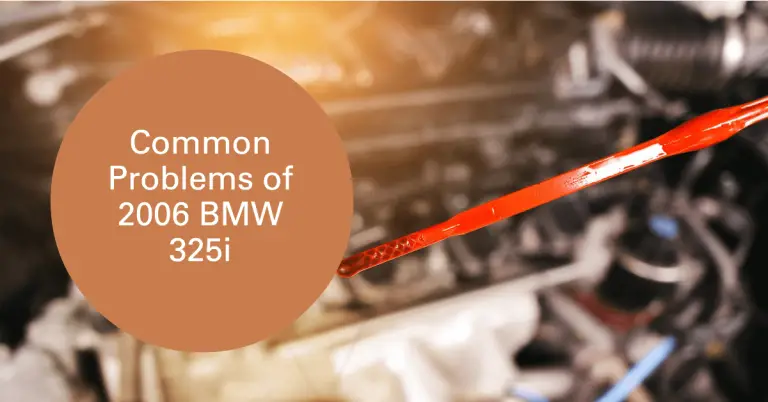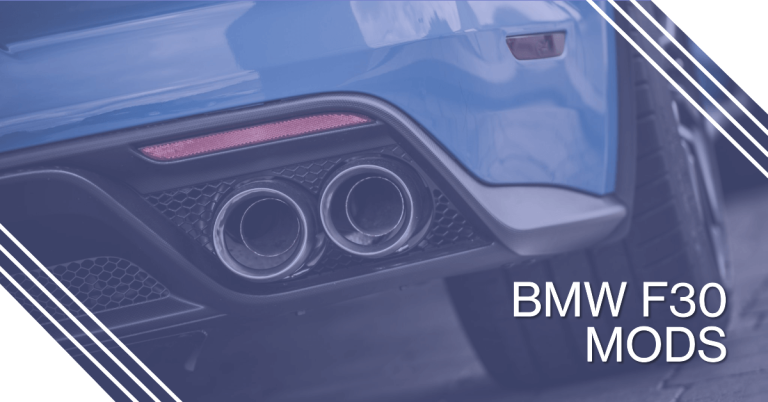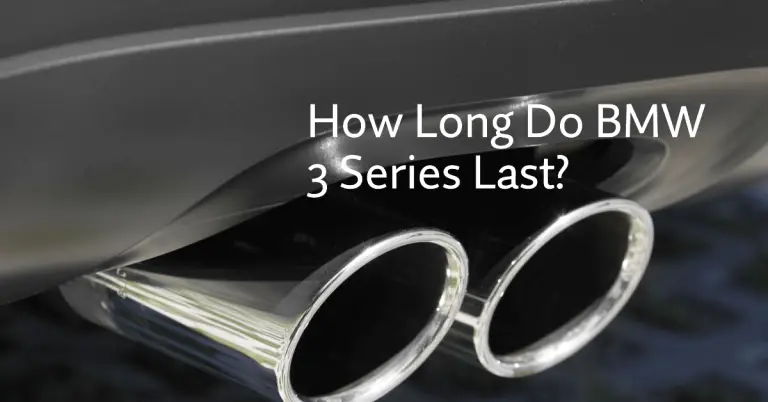BMW 335is Reliability: A Comprehensive Review
For BMW enthusiasts seeking exhilarating performance in a practical 4-door package, the 335is model offers an enticing combination of power and luxury. But how reliable is the BMW 335is for the long run? What are the common problems owners experience with this sports sedan? And what maintenance tips can help keep your 335is running smoothly for years to come?
This comprehensive reliability review aims to answer those key questions for potential 335is buyers, current owners, and fans of BMW’s high-octane sport sedans. We’ll provide a detailed overview of the BMW 335is including its performance specs and design features. We’ll discuss major mechanical issues, minor problems, projected maintenance costs, and tips to improve longevity. Common recalls will also be covered.
Our goal is to thoroughly cover the 335is’ strengths and weaknesses to help consumers make an informed decision about buying, owning, and maintaining this BMW performance machine long term. Let’s get started!
Overview of the BMW 335is High Performance Sedan
The BMW 335is is a specialty model based on the brand’s venerable 3-series platform. It was introduced for the 2007 model year and remained in production through 2013 across two generations of 3-series vehicles. During its lifespan, the 335is served as the highest performance variant of the 3-series until the arrival of the full-fledged M3 model.
So what sets the 335is apart from a standard BMW 335i? Primarily, a substantial power boost. The 335is is motivated by a 3.0L twin-turbo straight-6 engine that produces 320 horsepower and 332 lb-ft of torque – gains of 32 hp and 30 lb-ft versus the 335i. This powerful engine is mated to a 6-speed manual or 7-speed automatic transmission driving the rear wheels.
Complementing the beefed up motor are performance enhancements including a sports tuned suspension, bigger brakes, and model-specific 18″ alloy wheels. Visual tweaks like more aggressive front/rear bumpers, side skirts, and blacked out trim announce the 335is as something special. Inside, the cabin features sports seats and instrumentation accents.
Make no mistake, the 335is was engineered by BMW’s M division to deliver driving exhilaration on par with the acclaimed M3. It accelerates from 0-60 mph in just 4.7 seconds – quicker than its 335i sibling by half a second. This sharp performance in a usable 4-door package has earned the 335is praise from critics and owners alike.
But does the 335is live up to expectations long term? Let’s dive into the reliability details.
Major Mechanical Issues Experienced by BMW 335is Owners
While performance and driving dynamics impress, the BMW 335is does experience some problematic mechanical issues owners should be aware of. Some of the major problems reported by drivers over the years include:
Turbocharger and Fuel Pump Failures
One of the most notorious issues with the BMW N54 turbocharged engine used in the 335is concerns premature failure of the turbos and high pressure fuel pump. Both problems tend to arise after 60,000 miles or so.
Turbo failures manifest as loud whistling noises during acceleration, lack of power, and “limp mode” activation. Replacing the twin turbos can cost $2000 or more. The factory fuel pump is also prone to malfunction, causing poor engine performance. An upgraded aftermarket pump is recommended.
Modifying the 335is for more power seems to exacerbate these issues. So if longevity is key, resist the temptation to add too many performance “upgrades”. Sticking closer to stock boost levels reduces stress on the turbo and fuel systems.
Oil Leaks from Gaskets
Another common issue for the N54 motor involves oil leaks from various seals and gaskets.
The oil filter housing gasket often develops leaks over time, resulting in oil dripping down the engine block. Replacing the gasket and cleaning up residual oil runs $500-800 for parts and labor.
Valve cover gaskets also tend to leak as the 335is accumulates mileage. Oil can drip or spray onto the hot exhaust manifold, producing burnt smells. Resealing the valve covers is another $500+ repair bill.
Watching oil levels and spotting leaks early is important. Small leaks left unattended can lead to more significant oil loss and engine damage if low oil levels are ignored.
Water Pump and Thermostat Failures
As with many German performance sedans, the BMW 335is seems prone to premature water pump failure. Most pumps need replacement between 60-80k miles. Symptoms include coolant leaks, overheating, and check engine lights.
It’s a good idea to replace the thermostat when the water pump is done. Expect to pay $800-1200 for parts and labor on this common cooling system job. Using a quality pump and thermostat brand like OEM or Wahler can help extend service life.
Carbon Buildup in Intake Valves
Direct injection engines like the BMW N54 are susceptible to carbon buildup on the intake valves and ports after 60,000+ miles. This carbon accumulation robs power and efficiency while causing rough idling.
Cleaning the valves through walnut blasting is the most effective remedy, though it’s cost prohibited at $1200+ for most owners. More affordable options are fuel system cleaners or water/methanol injection kits to reduce buildup.
Less Serious But Annoying Problems 335is Owners Deal With
In addition to major drivetrain components, there are a few other nagging issues that come up frequently with the BMW 335is:
- Coil Pack Failures – The ignition coil packs tend to fail prematurely, causing misfires and check engine lights. Replacing a bad coil runs around $200.
- Oil Filter Housing Cracks – The plastic oil filter housing often cracks, leaking oil. Metal housings are an upgrade.
- Starter Motor Failures – Frequent no-crank and slow crank problems stem from dying starter motors.
- Vanos Solenoid Problems – Faulty Vanos variable valve timing solenoids disrupt engine timing, sapping power.
- Burning Oil Smell from Leaks – Valve cover gasket leaks drip oil onto hot exhaust components, emitting unpleasant odors.
While not catastrophic, these “minor” issues still add up in repair costs and frustration. Being ready to tackle them proactively is key to preserving your sanity as a 335is owner.
Maintenance Schedule and Costs for the BMW 335is
To keep that powerful twin-turbo 6-cylinder humming for the long run, the BMW 335is has demanding maintenance requirements. Here’s what owners are recommended to follow:
- Oil changes – Requires full synthetic oil changed every 5000 miles or once a year minimum. Mobil 1 0W-40 or similar quality oil is best.
- New spark plugs – OEM plugs must be replaced around 60,000 miles. Use only iridium plugs for longevity.
- Air filter & cabin filter – Replace the engine air filter and cabin air filter annually. Use OEM or OE quality filters.
- Brake fluid flush – Brake fluid should be flushed every 2 years to avoid brake system damage.
- Coolant flush – The coolant should be replaced every 4-5 years for maximum corrosion protection.
- Fuel system cleaning – Using quality fuel injector cleaner every 10k miles helps keep intake valves clean.
- Tires – Summer performance tires wear more quickly, needing replacement every 30k miles or less.
- Pre-purchase inspection – Get one before buying any used 335is. Look for leaks, records, mods, turbo/fuel pump health.
And of course, any “Check Engine” or other warning lights should be scanned and addressed immediately to prevent bigger issues down the road. Diagnostic fees and parts/labor costs add up quickly with Euro luxury cars.
In total, budget $2000 or more per year for preventative maintenance costs on a BMW 335is as it accumulates miles – more if repairs are needed. While not outrageous, it’s higher than maintaining an economy car or mainstream sedan. But necessary upkeep helps justify the 335is as a “lifetime car”.
Tips to Improve Reliability and Longevity for the BMW 335is
For buyers considering a used BMW 335is, or current owners seeking maximum longevity, here are some handy tips:
- Prioritize maintenance – Don’t cut corners or skip recommended services. This performance sedan demands meticulous care.
- Fix oil leaks quickly – Don’t let leaks go unchecked. Repair immediately before major engine damage occurs.
- Install an oil catch can – Catch cans reduce gunk buildup in the intake and improve reliability. Worth the $300 upgrade.
- Upgrade the fuel pump – Consider replacing the factory fuel pump with an aftermarket version rated for more power. Provides a bit more peace of mind.
- Clean intake valves regularly – Prevent carbon buildup through affordable fuel system cleaners and inspect valves during repairs.
- Let the car warm up – Allow the engine to reach operating temperature before driving hard. This reduces stress on the turbo and oil.
- Use quality fluids/filters – Don’t cheap out on oil, coolant, transmission fluid, or filters. Stick with approved brands.
- Drive gently when cold – Limit high RPM acceleration and spirited driving until the 335is is fully warmed up.
- Consider an extended warranty – For peace of mind, an extended warranty on a CPO 335is or older vehicle can offset repair costs down the road.
While not bulletproof, adhering to strict maintenance intervals and addressing issues early helps the BMW 335is achieve well over 100k+ miles. These tips will help maximize reliability and lifespan.
BMW 335is Model Years Affected by Recalls
Despite some problematic reliability issues, the BMW 335is has not been affected by any major widespread recalls during its 2007-2013 model year run.
A search of the NHTSA database turns up zero safety recalls for the 335is. Most recalls related to this generation 3-series apply to lower trim models, not the performance-focused “is” variant. And no BMW technical service bulletins specific to the 335is exist either.
This lack of serious recalls indicates there are no overt design flaws or safety hazards on 335is models from any model year. Of course it’s still smart to run a VIN check on any used 335is to check for outstanding issues. But overall these are solidly engineered cars.
Conclusion
The BMW 335is remains an excellent choice for drivers seeking compact executive car excitement and refinement. This special sedan blends usable four-door practicality with serious BMW Motorsport DNA. Electrifying turbocharged power, spot-on handling, and luxury appointments create an intoxicating package.
However, interest buyers should be realistic about the 335is’ demanding maintenance schedule and potential problem areas like the turbos, fuel pump, leaks, and carbon buildup. This is not a “set it and forget it” car. But with preventative care and timely repairs, a properly maintained 335is can potentially reach 200,000 miles or beyond.
For those who put in the diligent wrench time, the BMW 335is rewards with a sheer driving experience matched by few sedans. It’s a high-performance machine worth maintaining. We hope this deep dive into 335is reliability assists buyers and owners in keeping this BMW at its best for years of motoring enjoyment. Stay tuned for more guides to getting the most from your Ultimate Driving Machine!







